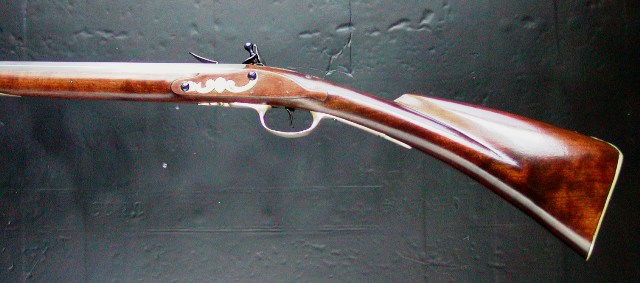Trapper Scott
45 Cal.
I've been reading about staining cherry using potassium hydroxide (lye) which seems to give a good deep brown/reddish color after it is heated a bit. Did you use a leather dye on yours? ThanksYou will love it!
I dye the wood to get the deep reddish-brown color (or any other color) . Then apply several sessions of a wiping varnish and sometimes I use a paste wax to finish it off. Here is a Kibler SMR that I did in Cherry.
One thing about Cherry, however, is that it can look 'blotchy" due to the grain and wood density. I think Maple takes the stain more evenly.









